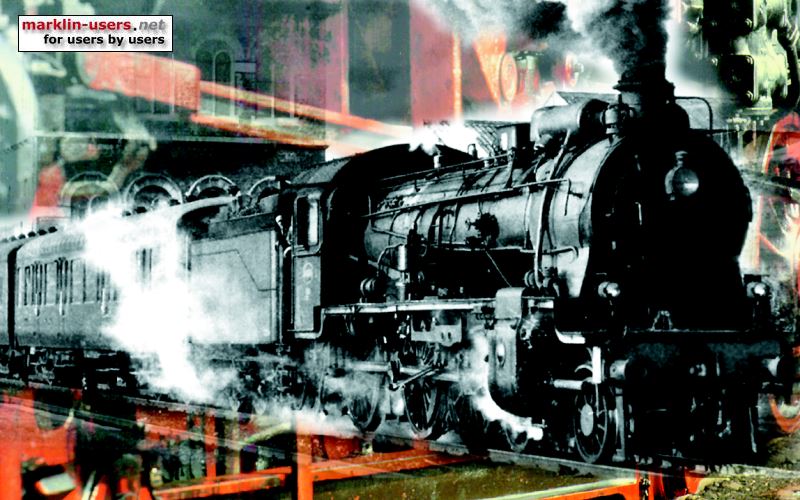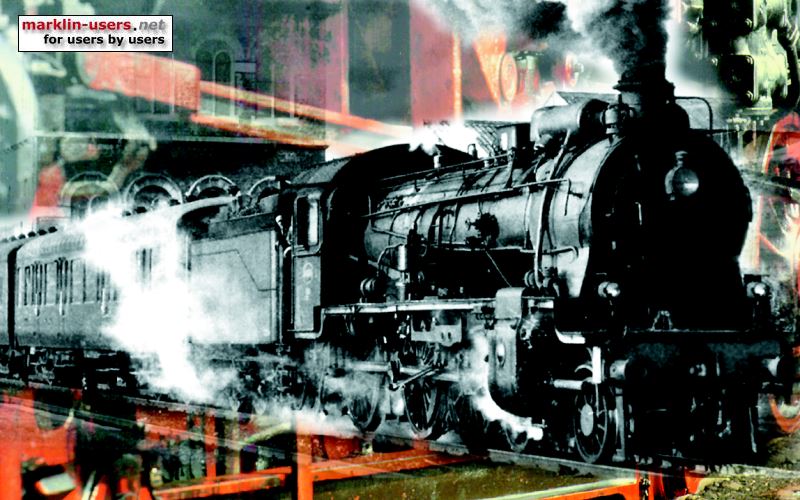
Rebuilding Märklin 3148, NSB Di5 865, to digital with Märklin high propulsion conversion set 60923
Updated 16.05.2013
Märklin 3148, NSB Di5, with a home made brake car, both with telex

Brake car:
Many years ago a NSB El 10 (Märklin 36336) was
running in Oslo West main station as a shunter. It had a rebuilt low sided
freight car connected most of the time. The car was filled with concrete
and had a centre platform. It's sole purpose was additional brakes, when long
passenger trains were moved without the brakes connected to the locomotive.
This kind of "special equipment" was often made by the local railway
workshop, sometimes only one unit, therefore it could be big varieties from one
district to another. I have made a brake car from my own imagination, with
an end platform, two lamps and a Telex coupler. The brake car's Telex
coupler has it's own function output, f3, from the locomotive.
The locomotive:
Preparations:
Remove the motor, pick-up shoe and the reversing unit. Remove the bulbs and all
the wires, including the one soldered to the pick-up shoe connector. Clean
the locomotive chassis if required. Make sure that all the rotating parts
moves freely. Unscrew the couplers. Save the coupler centring springs and the
screws. Note the plastic covered screw for the rear coupler. Lubricate
the moving parts if necessary.
I had the locomotive bodies from 34641 and 37649 left over after some other conversions. Just for fun I used the roof from 34641 on my 3148, to separate it from two other 3148 I have. As far as I know, NSB never had dark roof on the Di 5.
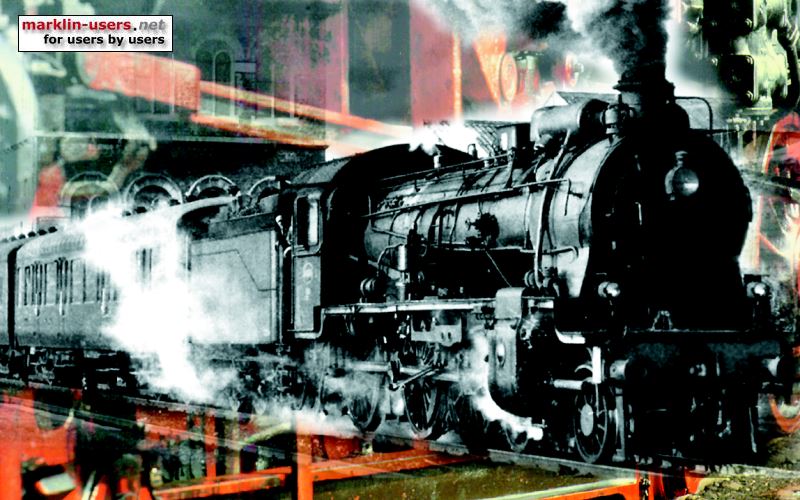
The final locomotive inside, after the layout change.
New 5* high power motor:
I used the motor from a Märklin high power mfx conversion set 60903 for this
locomotive. The installation is very simple, after cleaning the locomotive
chassis. Before installing the brushes, make sure that everything rotates
freely. Add a few small drops of oil, if required. When everything
is perfect, install the brushes.
Decoder:
This locomotive used to have an electro-mechanical reversing unit. The mfx decoder
is installed at the same place, in an ESU 21MTC adapter board, ESU part no.
51968. This adapter has amplifiers for the the function outputs f3 and f4.
I have used wires with Märklin's colour codes. The adapter board is
installed with a plastic screw, Märklin part no. 785100, after carefully
drilling a 2,5 mm hole in the amplifier board. It is possible to see all
the leads in the amplifier circuit board, when holding it in front of a lamp.
Behind the adapter board is a 3mm plastic spacer.
Märklin decoder:
If I should do this conversion today, I would have used The Märklin multi
protocol decoder 60942. It is installed on an amplifier board that gives six
function outputs. My conversion was done before the Märklin 90642 was
available. If so, I would have installed the decoder in the Märklin
decoder holder 258820.
OBS:
A newer ESU 21MTC adapter board 51968 I have used for another conversion has a
different layout and some additional soldering pads. I do not recommended
to drill holes!
The plastic screw is to prevent the decoder form hitting any metal parts and the spacer is to prevent the board from touching the locomotive chassis and to make space for the wires behind the board.
On the rear side (or rather RH side) of the adapter I have glued a small printed
circuit board, to use as a distributor for the orange + wire from the decoder.
I think the part number for the distributor plate, from Märklin, is 614850.
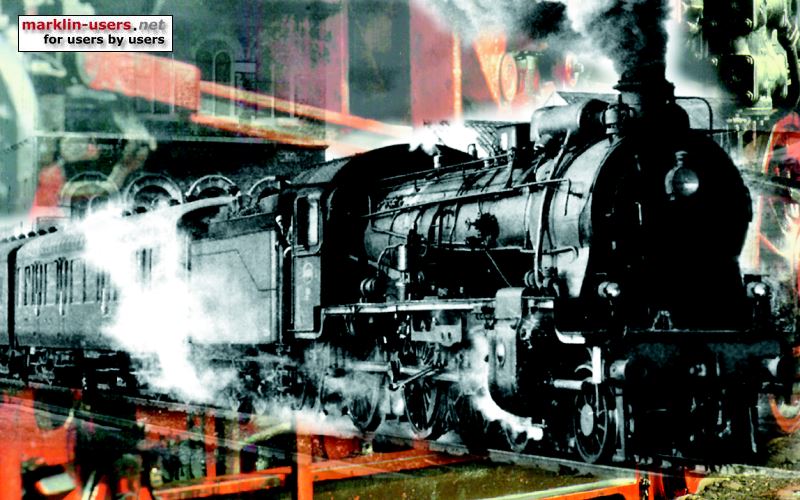
See tables below for decoder settings, which I did with my Central Station 60212 (CS1).
The orange + is distributed to the front light, the front Telex,
the rear light and the rear Telex and to a three-pole connector under the front
coupler.
Only one orange wire leads the rear end. It is distributed to the rear Telex
under the rear bulb holder.
Two orange wires to the front end; one to the bulb holder and one to the front Telex. From the
Telex magnet soldering pad another wire goes to the brake car connector.
Another orange wire, via a 1 KOhm resistor, goes to the interior light.
The mfx decoder is a ESU 61601 Lokpilot V3.0 M4 multiprotocol decoder with a
21MTC connector. I selected this due to the f3 and f4 outputs. I do
not know if these functions work with the Märklin mfx decoder.
A big advantage with the mfx decoder is the possibility to adjust the locomotive's maximum speed down to the prototypically correct 60 km/h. With the c91 decoder I used for the first conversion of this locomotive the speed was 130 km/h at "full power", even with the speed potentiometer adjusted to minimum.
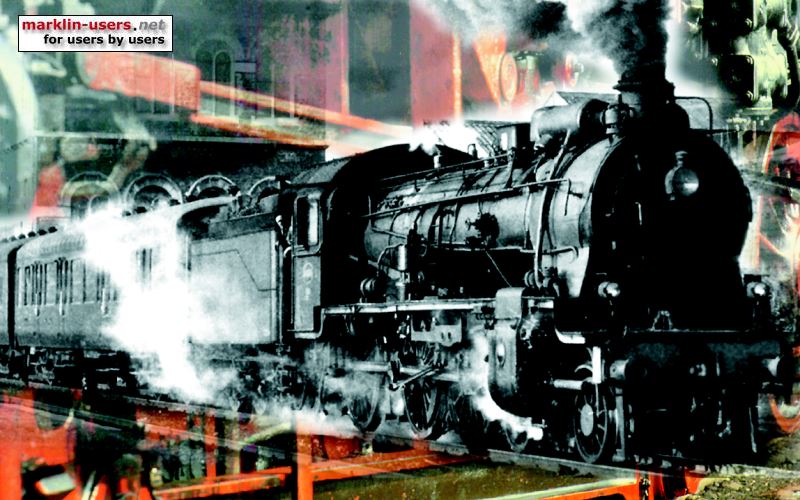
This photo was shot before the wiring layout change.
Interior light:
Two smd LEDs are glued to the top of the locomotive, above the motor. The
brown/white wire from the decoder adapter board is soldered to the rear LED's
cathode. A black wire connects the anode to the cathode of the front LED.
The anode of the front LED is connected to the + distributing point behind the
adapter board, via an orange wire and a 1kOhm resistor. The f4 power is
adjusted down to 32 of 255 with my Central Station 1.
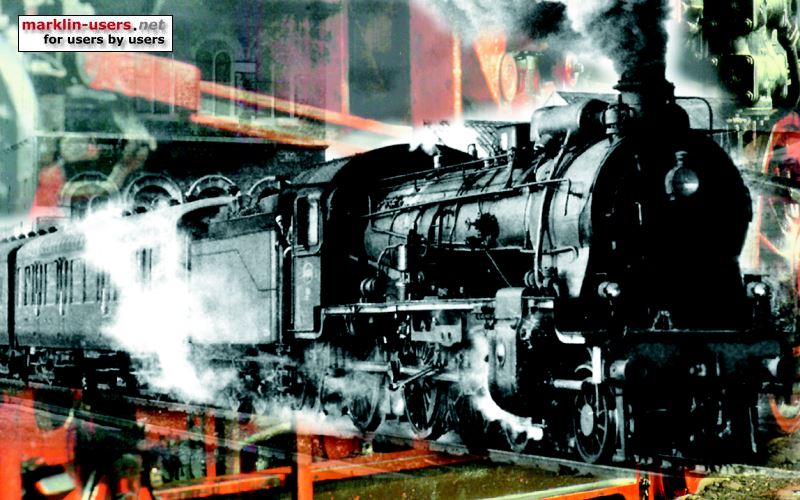
I put a piece of white paper under the drivers cab ceiling, to improve the light
distribution.
Motor:
The installation of the motor from the 60923 set is quite simple. After
the preparations, install the new motor without the brushes. Check that
everything rotates freely. Install the brushes. I glued the
noise suppressors the amplifier board in
front of the decoder.
Bulb holders:
From an earlier conversion I have removed the original screw bulb sockets.
This is not necessary, as insert bulb holders comes with the 60903 conversions set.
Just unscrew the bulbs, remove the C-clip and push the bulb holders into the old
socket. Be careful with the wires. Install the C-clip.
A small
distributor plate (614850?) can be glued inside the wall on the RH side of the
motor magnet, to distribute the orange + to the wire ends from the Telex magnet
and the bulb holder.
The gray wire from the front holder must be extended, as it is too short to be soldered directly to the designated
soldering pad. The orange wire is soldered to the distributor plate
behind the decoder amplifier board.
Picture of the bulb holder, from another conversion (Märklin 3772), with a home made distribution board
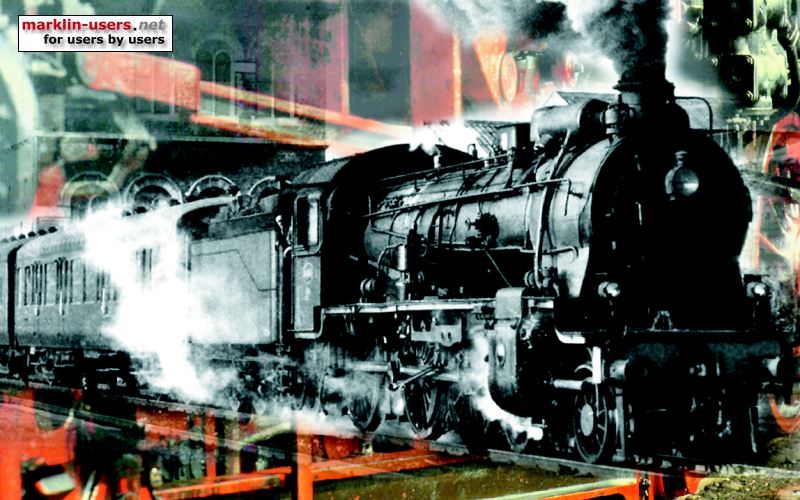
3148 rear lamp holder and wires to the Telex coupler
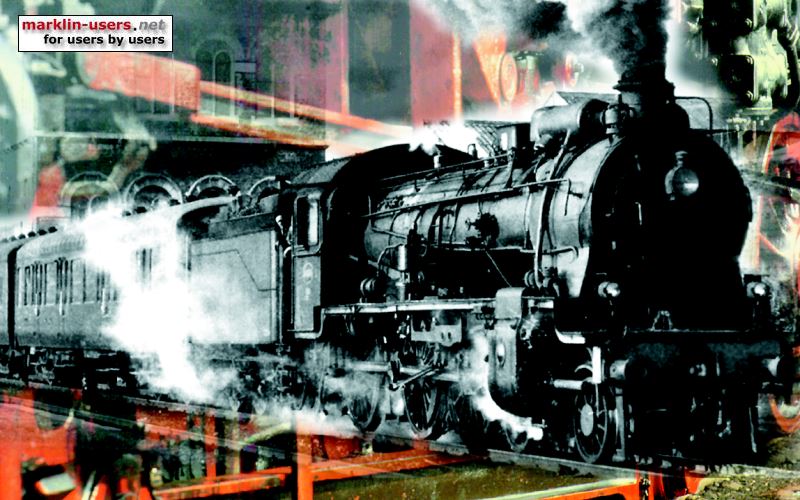
Light intencity:
After the conversion, the light intensity is constant. Even when using the
22 Volt bulb 610080, the light shines through the locomotive body, around the
bulbs. To prevent this, small pieces of insulating tape is glued inside
the body in this area, after temporary removing the light guides.
Telex couplers on the locomotive:
I used the Telex parts from a 37649. The older type Telex, for instance from
3065, is too wide for Märklin's close couplers.
First draw the two wires to each magnet through the holes in the locomotive
chassis. Then solder the wires
to the magnets.
Another option is to solder the wires to the magnets first, and to the amplifier
board when the magnets are installed.
The magnets I bought had two blue stiff wires, about 10 cm long, soldered to
them. I replaced them with soft wires with the correct colours.
Install the magnets firmly by leading the metal tongues through the slots in the
locomotive chassis. Pull the wires carefully from above to take in the slack between
the magnets and the chassis. Finally bend the metal tongues 90 degrees outwards
with a pair of pliers.
Install the hook and the uncoupler rod.
Front end:
The brown/red wire from the decoder's amplifier board goes to the front Telex coupler magnet.
The orange wire is connected to the distributor board behind the amplifier
board.
Rear end:
The brown/green wire from the decoder's amplifier board goes to the rear Telex
coupler magnet.
The orange wire is connected under the rear bulb holder.
The brake car:
The brake car is made from a lot of parts from other cars, basically parts I had laying around, some of them broken. I also had a body from the 3065, DB Br 260, laying in my box. Just before making the below photo a small accident occurred. The car rolled off the test track and fell 30 cm down on it's front, bending the handrail and dislocating the Telex coupler. I have to repair it. New and better photo will follow later.
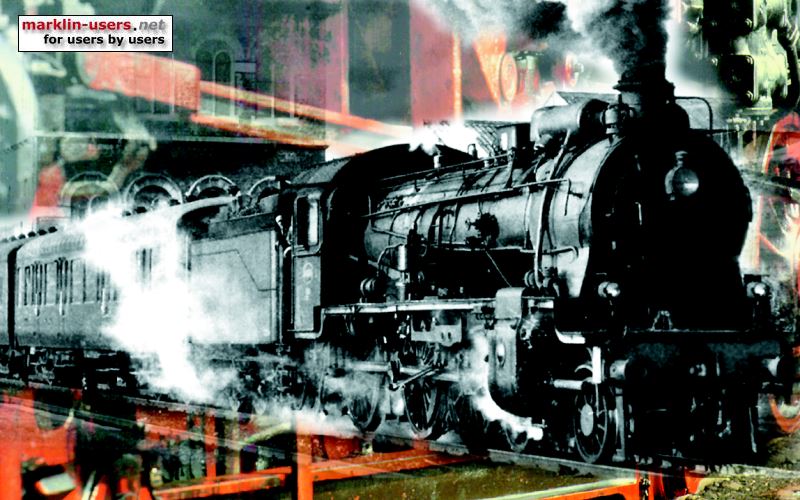
The chassis is from an old 4665 double car. I got it second hand long time ago and never had the wooden cargo or the dollies. I started with removing the coupler in one end and modify the other coupler to a close coupler from the close coupler set 7205. The chassis has a hole in the centre (for the dolly), perfect for fitting the Telex.
The car body is from a low sided freight car 4423 from the starter set 2915. This is Märklin's cheapest car, so I had no worries to cut the body into three pieces. I glued two of the parts together to a length of 66 mm. The spare 4423 chassis is in my box as a spare part. The new car body is filled with flat and wide type self sticking lead weights, supposed to be used as balancing weights on car wheels. The lead is covered with a gray painted thin cardboard, to look like concrete. The car weighs in at 128 grams.
The end platform floor is made from the part left over from the 4423 car body.
Under the platform floor I installed some platform parts and side steps from an old
damaged tank car, 4501.
The handrails come from the 3065 body I found in my box. The front one is easy to
install. After installing the platform floor and step parts and the 12
Volt bulbs to the handrail, simply glue the handrail to the brake car.
Small slots are cut in the floor for the bulb wires. I had to file off a little bit in the bottom of
the rail part.
The side rails are simply installed by melting the plastic by
pushing the rail into the plastic body, using a soldering iron as heating and
pushing tool. The lowest rail end is bent under the side steps.
My wife found some miniature 12 Volt bulbs in a hobby store. Those fitted
perfectly into the light guide holes in the handrail. The bulbs are connected in series.
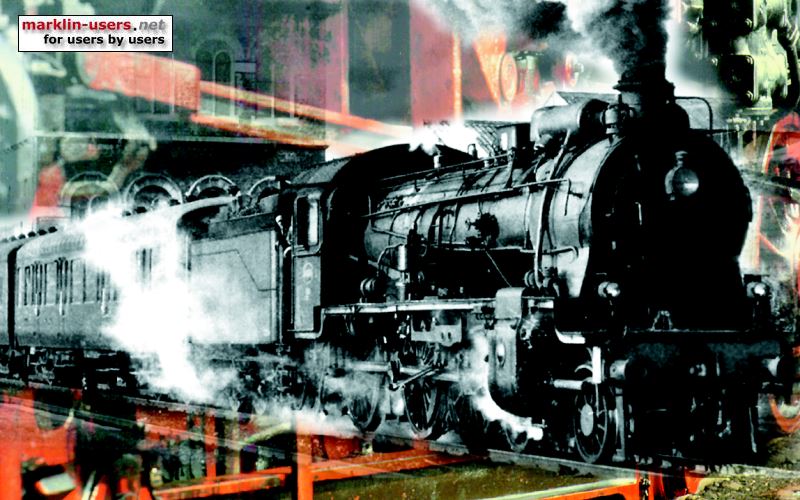
Telex coupler on the brake car:
The Telex parts on the brake car comes from the Br 86, for instance Märklin no. 3096.
The coupler holder is screwed with a shortened M-track screw 7299 into the lead
weights, through the existing hole in the car chassis. The conical shape
of the screw head centres the coupler holder. I did not have any spacer to
get the correct coupler height, so I used two 3 mm nuts. The front end of the
coupler holder is secured with it's hook into the guide for the original coupler,
after bending the guide slightly forwards in the middle, to make it fit the
circular sideways movement of the coupler. The centring method is maybe not so fancy, but it works
perfect. One spring one each side, from the coupler holder to the side
steps. All this fits perfect; the clearance between the coupler
holder and the wheel axel, the distance from the centre hole to the front
coupler guide, one should almost think that the car chassis was made for this
purpose.
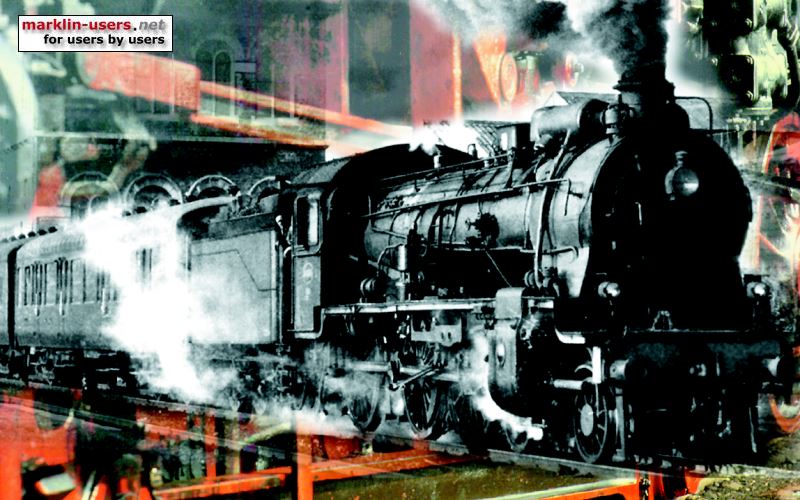
The rear end (locomotive end) coupler:
A pulling spring is secured between the two nuts used as spacer. This
spring centres the coupler in the locomotive end. This coupler is rebuilt
to a close coupler, by cutting off the coupler part of the original coupler and
gluing in a car coupler from a 7205 coupler set (40 close couplers for cars, 10
for locomotives). I removed the two moving parts from the original coupler
and cut the main part off as shown in the photo. A 7205 close coupler is
glued after cutting off the unnecessary parts.
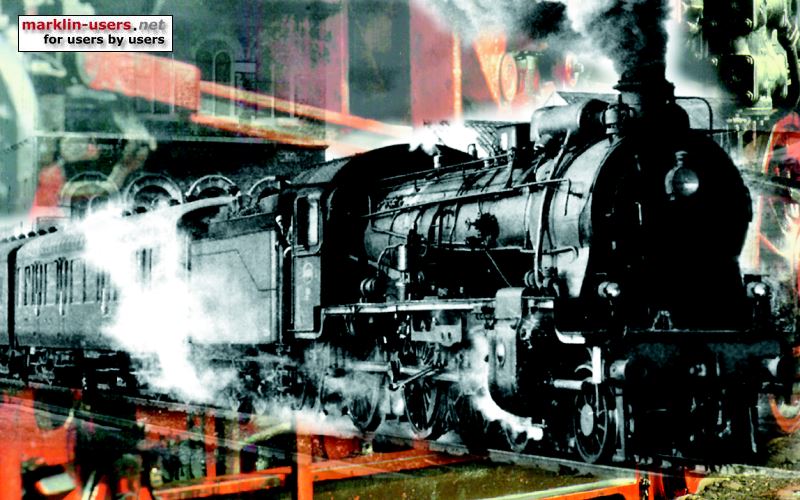
The photo shows the coupler from another model, but the procedure is the same.
The connector between the locomotive and the brake car
The wires from the three-pole connector to the Telex and the bulbs are secured to the car
chassis with a green stuff from 3M, to keep it away from the rotating wheels.
The wires under the locomotive may look a little bit chaotic. The gray
wire goes to the front lamp sockets, the orange to the orange wire on the Telex
magnet RH solder pad, the brown/yellow to the f3 output on the decoder adapter
board. Terminal 4 is currently not in use.
I am testing a pulling spring between the brake car and the locomotive, on top of the coupler, to avoid the slack in the coupler, but still allow some movement in curves and over turnouts.
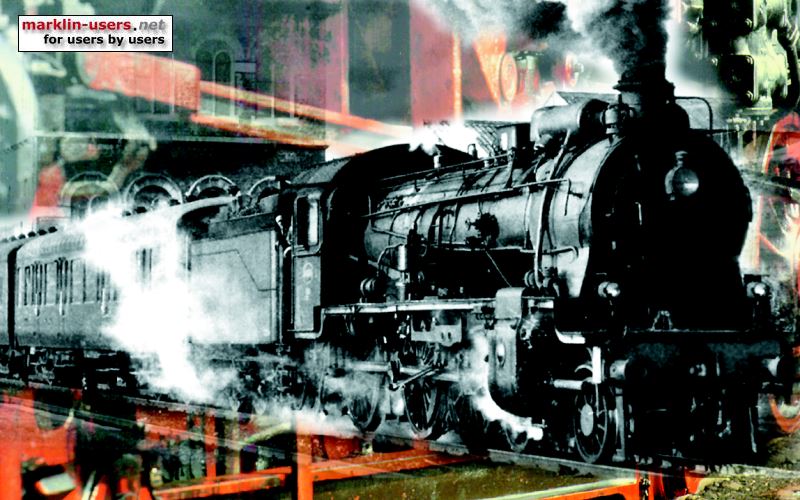
It is no need for the fourth connector on the locomotive side. This is
"left over" form the initial conversion.
Parts used for this conversion:
| Item | Part number | Qty. | Description | |
|---|---|---|---|---|
| Locomotive | 60923 | 1 | Digital high propulsion conversion set, motor and small parts only | |
| 205371 | 2 | Uncoupler rod | Telex parts, as on 37649, DB Br 360 | |
| 298470 | 2 | Coupler hook | ||
| 213870 | 2 | Telex magnet | ||
| 614850 | 1 | Distribution board | ||
| 785100 | 1 | Screw for decoder adapter board, plastic | ||
| - | 1 | 3mm plastic spacer behind decoder adapter board | ||
| - | 1 | 3-pole connector, cut from a SIL socket | ||
| ESU 61601 | 1 | Lokpilot V3.0 M4 multiprotocol decoder with 21MTC connector |
Installed before the new Märklin decoder was available | |
| ESU 51968 | 1 | 21MTC adapter board, with f3 and f4 outputs | ||
| Current decoder from Märklin |
60942 | 1 | Multi protocol decoder with amplifier board, six outputs | |
| 258820 | 1 | Decoder holder | ||
| 756100 | 1 | Screw for decoder holder | ||
| Brake car | 228970 | 1 | Uncoupler rod | Telex parts, as on 3096, DB Br 86 |
| 244560 | 1 | Coupler hook | ||
| 229240 | 1 | Telex magnet and coupler holder | ||
| 753120 | 1 | Screw for coupler hook | ||
| 4423 | 1 | Low sided cargo bay, shortened | ||
| 4501 | 1 | End platform with side stairs | From old damaged cars "laying around" | |
| 4665 | 1 | One car from the double set | ||
| 7299 | 1 | Screw for M-track, shortened | ||
| 216640 | 1 | Front handrail | From an old 3065 body | |
| 216650 | 1 | RH front side railing | ||
| 216660 | 1 | LH front side railing | ||
| - | 1 | 3-pole connector, cut from a SIL socket | ||
| - | 2 | Miniature 12V bulbs with wires | ||
| - | 4 | Small pulling springs | ||
The 3148 and brake car decoder functions:
| 3148 NSB Di 5.625 A and 4665 brake car | ||||||||||
|---|---|---|---|---|---|---|---|---|---|---|
| mfx w/amplifier | Light | Telex | Light interior |
Shunt speed |
Acc/ dec | |||||
| funct. | dir. | end 1 | end 2 | car | end 1 | end 2 | car | |||
| f0 | forward | 3 | 2 | |||||||
| reverse | 3 | |||||||||
| f1m | both | up | ||||||||
| f2m | both | up | ||||||||
| f3m | both | up | ||||||||
| f4 | both | on | ||||||||
| f5 | both | on | ||||||||
| f6 | both | delay off | ||||||||
| f7 | both | 3 | 3 | 2 | All exterior light on f0-f + f0-r |
|||||
| f8 | both | 3 | 3 | 2 | Shunting mode f0-f + f0-r + f5 + f6 |
on | delay off | |||
My setting of the decoder:
| Decoder settings, 3148 A | Default | Mine | |
|---|---|---|---|
| Analogue settings: | |||
| Enable analogue mode | check | < | |
| Starting voltage | 7,300 | 15,500 | |
| Maximum voltage | 23,000 | 25,500 | |
| Control settings: | |||
| Swap directions | uncheck | < | |
| Max speed | 255 | 57 | |
| Min speed | 4 | 1 | |
| Acc time | 7,000 | 8,500 | |
| Dec. time | 3,750 | 8,500 | |
| Forward trim | 1,000 | < | |
| Reverse trim | 1,000 | < | |
| Motor settings: | |||
| Motor PWM-frequency: | |||
| Low frequency | uncheck | < | High frequency | check | < |
| Load Control, 5* Märklin motor: | |||
| Reference parameter | 10,000 | < | |
| Control parameter K | 90 | < | |
| Control parameter I | 128 | < | |
| Control influence | 255 | < | |
| Special options: | |||
| Preserve directiontion | check | < | |
| Persistent acceleration | uncheck | < | |
| Persistent speed | check | < | |
| Persistent functions | check | < | |
Screenshot from the Central Station 1:
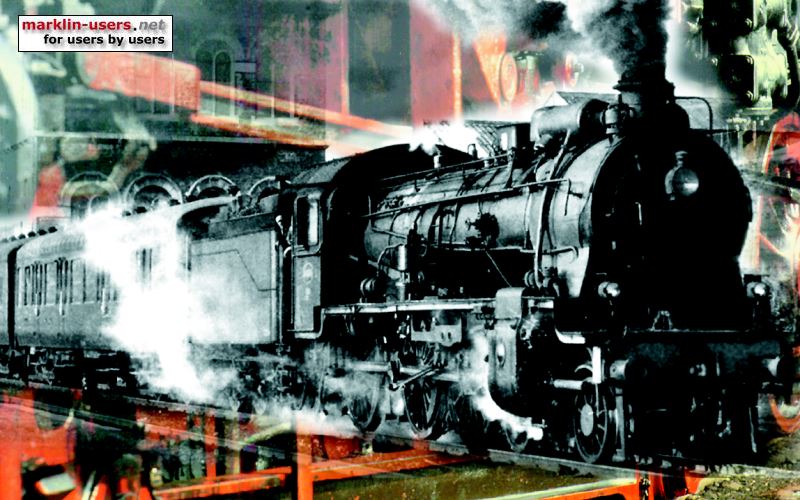
The left part is this Di5, Märklin 3148, with the brake car, the right part is my
double traction
NSB Di5.
Märklin 3148A + Brake Car wiring diagram:
